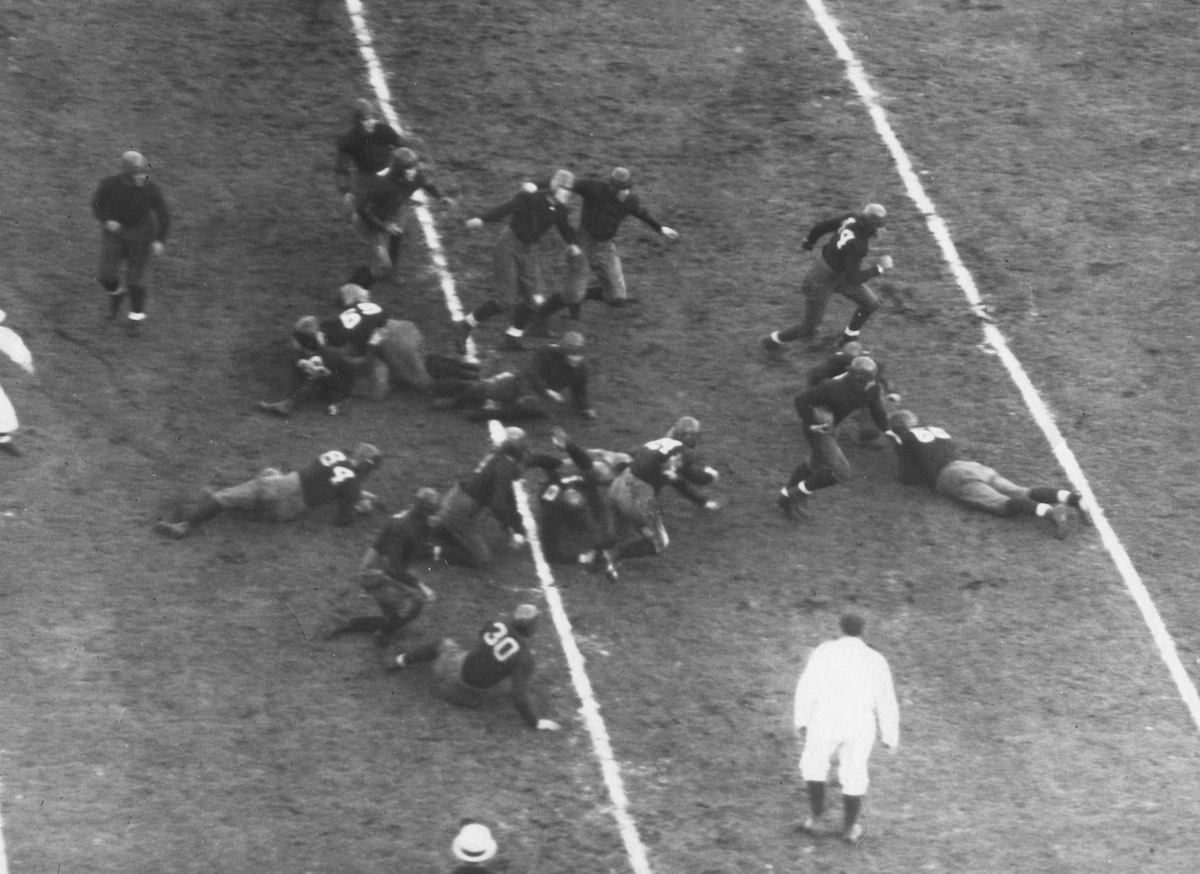
In the new issue of TIME, Sean Gregory looks at the risk of brain injury that accompany playing football. It’s a harrowing tale focused on the death of a high-school player.
That risk is a problem that has lurked on the football field since the end of the nineteenth century. “Football killed 40 boys and young men during the 1931 season,” TIME reported in the Dec. 14, 1931, issue. “To approximate that record of deaths it is necessary to go back to 1905 when more than a score of players died and President Roosevelt stopped the roughness of play.” The article continued:
Among this year’s dead 40 were Joseph I. Johnson, 13, of Lafayette, Ind., who shot himself in the abdomen because he could not “make” his grade school team. Another fatality was Coach Ray Pardue. 24, of Statesville, N. C. High School team, cuffed to death by Garfield Jennings, 20, vexed linesman of the Taylorsville, N C. High School, which was playing Statesville High. Almost all the other deaths followed bashings on the football field. Most discussed of the deaths from violence were those of Army’s Richard Brinsley Sheridan (TIME, Nov. 2) and Fordham’s Cornelius Murphy. Murphy, 22, died fortnight ago from a ruptured brain blood vessel. Eleven days prior he had been buffeted into unconsciousness. He was hospitalized for concussion of the brain, released prematurely.
That 1931 record may still stand.
With more than a century of football played throughout the United States, it’s difficult to determine exactly how many deaths are related to the game each year. Early seasons, like the legendarily tough 1909 year, have their high injury counts blamed on lack of protective equipment — but prior to 1931, and especially prior to that 1905 year when Teddy Roosevelt intervened to make the sport safer, it’s hard to find any numbers at all.
Starting in 1931, coaches with joined the Committee on Injuries and Fatalities of the American Football Coaches Association to track football-related injuries and fatalities. The group has issued a report every year since (with the exception of 1942), though its methods of measurement have evolved over the years. It separates direct fatalities (the result of a “traumatic blow to the body,” in the words of the 1966 report) from indirect football-related deaths (in the words of the latest report, “caused by systemic failure as a result of exertion while participating in a football activity or by a complication which was secondary to a non-fatal injury,” eg. heart failure or heat stroke), and counts players at every level from “sandlot” to professional.
The committee counted 49 deaths related to football in 1931–31 direct and 18 indirect. The only year on record between 1931 and 2013 with more direct fatalities was 1968 (36), but that year’s indirect fatalities were lower (12) than 1931. Indirect fatalities were only equal or higher in 1933, 1935, 1936, 1961, 1965 and 2009. Only 1965 manages to tie 1931 for total deaths, leaving them sharing the title of deadliest year.
From the beginning, the point of keeping track was to figure out ways to bring the numbers down. (The reports, organized by a group of people closely linked to the sport, also tend to point out how small the numbers are in terms of percentage of players.) That 1931 article, published shortly before the first fatalities report, suggested a few ideas:
Dr. Beverly Randolph Tucker. Richmond, Va. neurologist, advised President Hoover to appoint a National Commission which would prevent sports becoming too rough for human anatomy to withstand.
Dr. Henry Ottridge Reik, executive secretary of the Medical Society of New Jersey, urged New York, New Jersey and Pennsylvania doctors, who were meeting at Atlantic City last week, to campaign for the complete abolition of college and high school football.
Dr. Reik’s advice seems unlikely to ever be heeded, though his modern descendents are out there. Football is death for some, and a way of life for many.
Read more about the dangers of the game in this week’s issue of TIME: The Tragic Risks of American Football
More Must-Reads from TIME
- Cybersecurity Experts Are Sounding the Alarm on DOGE
- Meet the 2025 Women of the Year
- The Harsh Truth About Disability Inclusion
- Why Do More Young Adults Have Cancer?
- Colman Domingo Leads With Radical Love
- How to Get Better at Doing Things Alone
- Michelle Zauner Stares Down the Darkness
Write to Lily Rothman at lily.rothman@time.com